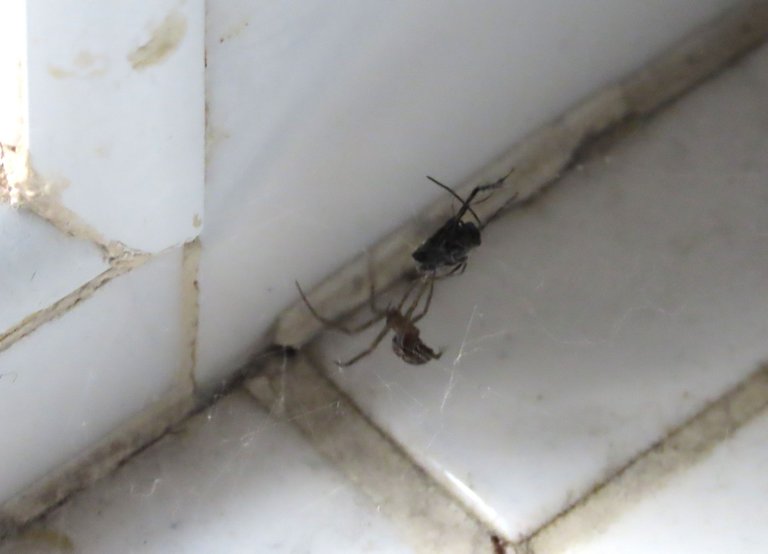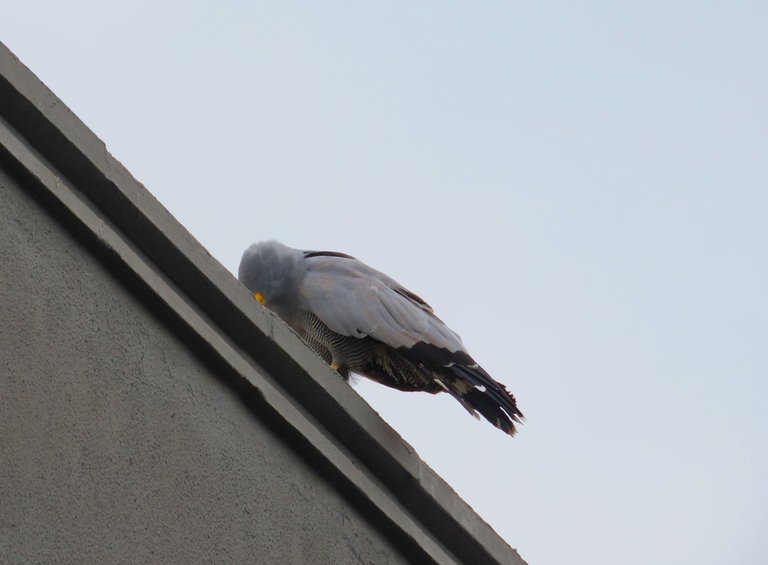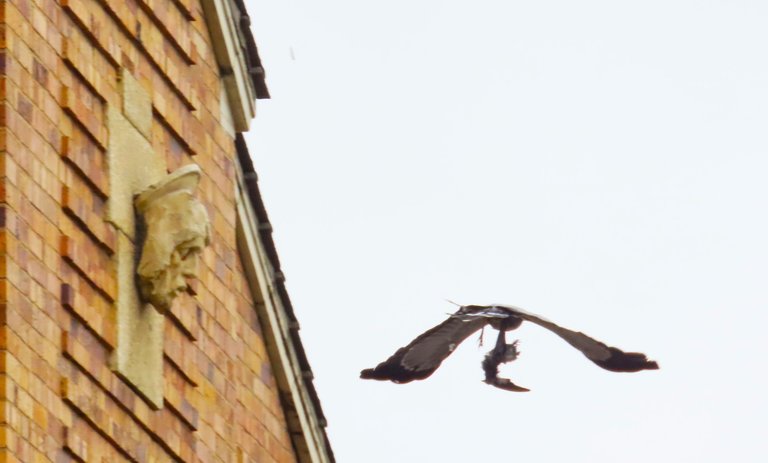A spider and a hawk catching prey.
First up is the spider, and then the hawk after that.

I also have a short video in here to show you Betty's action.
My wife called the spider Betty, and Betty decided to build her 3-dimensional web in our bathroom.
We might have this wrong, but we think that Betty is a small Black Cobweb spider, and I also have a bird of prey to show you after the spider.
Steatoda capensis is a spider originating from South Africa. Its common names include the black cobweb spider, brown house spider, cupboard spider and due to its similarities to the katipō spider it is commonly known as the false katipō in New Zealand. Common throughout Southern Africa, it has been introduced into other countries and is now present in Australia and throughout New Zealand. It is a small spider, usually an all-over shiny black. It may have a small bright red, orange, or yellow patch near the tip of the abdomen along with a crescent shaped band near the front of the abdomen.
It is thought that in some instances Steatoda capensis can bite humans causing a syndrome known as steatodism; which has been described as a less-severe form of latrodectism. Bites can be quite painful and can cause a general malaise for about a day.
.
The action video will show you that the little wasp stood no chance.
Here below, I will show you how a Harrier Hawk, lifted a dove off its nest.
The missus saw this harrier hawk landing on the roof edge of a building. Just in time I lifted my camera, and I will show you below what happened.
Look, in a second the hawk lifted a dove off its nest.
I wonder what that saint on the church wall at the left thought about the hawks' actions.
Not often that you will see this, and it all happened in a few seconds, and so fast that I could only get the 3 shots before the hawk was gone. As usual, I think that it sat close by in a hidden spot to watch the nest, and once the mom landed on the nest, the hawk grabbed her. We often have scenes like this, and things happen so fast that I can rarely get them on camera, but in here, as you can see, I got lucky, and I thought that you might also want to see it.
I hope you enjoyed the pictures and the story.
Photos by Zac Smith. All-Rights-Reserved.
Camera: Canon PowershotSX70HS Bridge camera.
Thank you kindly for supporting this post.




looks like that hawk caught a bat
Nah Mick, I took that lifting shot too quick, as it was definitely a dove that I saw. Bats over here never sit on the top of roofs, as they hang in caves and dense trees.
!BEER
View or trade
BEER.Hey @stresskiller, here is a little bit of
BEERfrom @papilloncharity for you. Enjoy it!Did you know that <a href='https://dcity.io/cityyou can use BEER at dCity game to buy cards to rule the world.
Predators as they seem. The cycle of the ecosystem.
Oh yes, it's all a part of the eco-system.
!PIZZA
Nice ones, nature always catch us ⚡
Thank you, and nature do indeed have many tricks to show us. !LOL
lolztoken.com
I told him that's the last thing I need.
Credit: reddit
@fonestreet, I sent you an $LOLZ on behalf of papilloncharity
(2/10)
NEW: Join LOLZ's Daily Earn and Burn Contest and win $LOLZ
Oh wow great capture. Indeed it looks like it got a bat.
looks like you pissed someone off :D gave some votes back 😜
Yeah blurt haters.. hah thanks man
Thank you, and no, I saw that it was a dove when the hawk lifted it. The dove was alive, and it flapped its wings as the hawk flew away with it.
never thought that size of spider is harmfull, not just like spiders in our home is harmless but they are terrible large in size
We also have some very large spiders here in Africa. The rain spiders, and the tarantula can grow very to a very big size. Some people keep them as pets. !Lol
There are many small spider species here that are very poisonous.
lolztoken.com
He was kind of a big dill.
Credit: reddit
@john0928, I sent you an $LOLZ on behalf of papilloncharity
(1/10)
Delegate Hive Tokens to Farm $LOLZ and earn 110% Rewards. Learn more.
Ohh no good for tarantula, the hairy thing of tarantula makes me creeps😬
!LOL
lolztoken.com
But I don't have thyme for that rubbish.
Credit: reddit
@john0928, I sent you an $LOLZ on behalf of papilloncharity
(4/10)
Delegate Hive Tokens to Farm $LOLZ and earn 110% Rewards. Learn more.
$PIZZA slices delivered:
@papilloncharity(3/15) tipped @jobeliever
Come get MOONed!